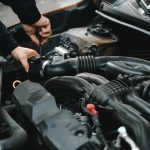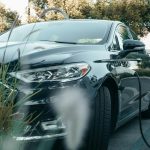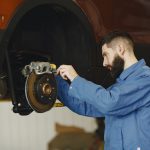The symphony of sounds that emanate from your car can be a telling language, signaling potential issues that demand attention. Addressing unusual sounds promptly is pivotal in maintaining your vehicle’s health and ensuring a smooth driving experience. In this comprehensive guide, we delve into the common types of car noises, methods to identify their sources, and practical tips to troubleshoot and resolve them.
The Importance of Addressing Unusual Sounds in Cars
Cars, like any complex machinery, communicate through sounds. Ignoring or dismissing these audible cues can lead to severe consequences. Timely intervention not only prevents potential breakdowns but also contributes to the longevity of your car.
Common Types of Car Noises
Engine Noises
The engine serves as the heartbeat of your vehicle, and any irregular sounds here demand immediate attention. Worn-out belts, loose components, or issues within the exhaust system can manifest as peculiar engine noises.
Suspension and Steering Noises
Clunks or squeaks while turning or navigating bumps may indicate problems within the suspension or steering components. Neglecting these sounds could compromise your vehicle’s handling.
Brake Noises
Squealing or grinding sounds during braking may suggest worn-out brake pads or issues within the braking system. Ignoring brake-related noises can jeopardize your safety on the road.
Transmission Noises
Whining, clunking, or grinding sounds during gear shifts could be indicative of transmission problems. Addressing these issues promptly is crucial to prevent major transmission failures.
Exhaust System Noises
Rattling or hissing noises from the exhaust system often point to leaks or damage. Left unattended, these issues can lead to decreased fuel efficiency and increased emissions.
Identifying the Source of the Noise
Listening Techniques
Sharpening your ability to listen to your car is the first step in troubleshooting. Pay attention to the pitch, intensity, and frequency of the sounds, and try to identify their source.
Visual Inspection
A thorough visual inspection is essential. Examine the engine bay, undercarriage, and exhaust system for visible signs of damage, wear, or loose components.
Test Drives
Taking your car for a test drive allows you to replicate the conditions under which the noise occurs. This hands-on approach can provide valuable insights into the nature of the problem.
DIY Troubleshooting Tips
Engine Noises Troubleshooting
Check for loose or damaged belts and inspect the exhaust system for leaks. Addressing these issues early can prevent further damage to the engine.
Suspension and Steering Noises Troubleshooting
Examine suspension components for wear and tear, ensuring proper lubrication. Regular greasing can significantly reduce clunks and squeaks.
Brake Noises Troubleshooting
Inspect brake pads, rotors, and calipers for signs of damage or excessive wear. Timely replacement of brake components is crucial for optimal performance.
Transmission Noises Troubleshooting
Check transmission fluid levels and inspect for leaks. Adequate lubrication is essential for the smooth operation of the transmission.
Exhaust System Noises Troubleshooting
Inspect the entire exhaust system for leaks or loose components. Patching up leaks and securing loose parts can restore the efficiency of the exhaust system.
When to Seek Professional Help
While DIY troubleshooting is valuable, some issues require the expertise of a professional mechanic. If you’re unable to pinpoint the source of the noise or if the problem persists, consult a professional to avoid exacerbating the issue.
Importance of Regular Maintenance
Prevention is often the best cure. Regular maintenance checks can identify and address issues before they escalate. Follow a routine maintenance schedule to keep your car in optimal condition.
Tips for Preventing Unusual Car Noises
- Follow a Routine Maintenance Schedule: Regular checks can catch issues early, preventing unusual sounds.
- Address Issues Promptly: Don’t ignore strange noises; address them promptly to prevent further damage.
- Avoid Harsh Driving Conditions: Rough driving conditions can accelerate wear and tear, leading to unusual sounds.
- Invest in Quality Parts: Using quality components during repairs and replacements can prevent premature failures.
- Stay Proactive: Pay attention to your car’s sounds and performance, intervening at the first sign of trouble.
Conclusion
In conclusion, your car’s noises are its way of communicating with you. By understanding, identifying, and addressing unusual sounds promptly, you ensure a quieter and trouble-free driving experience. Stay vigilant, be proactive, and your car will reward you with reliable performance.
FAQs:
How can I tell if the noise is serious?
Pay attention to the intensity and frequency of the noise. If it’s persistent or worsens, consult a mechanic.
Are all unusual car noises expensive to fix?
Not necessarily. Some issues may have simple and cost-effective solutions if addressed early.
Can I continue driving if my car is making strange noises?
It’s advisable to avoid driving until the issue is identified and resolved to prevent further damage.
How often should I check for unusual sounds in my car?
Regularly. Perform visual and auditory checks during routine maintenance or whenever you notice anything unusual.
Are there any smartphone apps to help diagnose car noises?
Yes, several apps use your phone’s microphone to analyze and identify car noises. Research and choose one that suits your needs.
Last Updated on November 22, 2023 by admin

Mac is an Automotive enthusiast. He owns up to 15 vehicles. He deals with Auto problems and shows his skill to Car owners who are seeking any type of Car help.





